Going Global: Navigating International Expansion
In the international arena, each target market relies on a specific business strategy. The same applies to communication.
Tailoring Your Message to New Markets
Different positions, different markets: international communication often differs significantly from domestic strategies. For instance, a French market leader might communicate as a challenger in new markets, adopting a more dynamic and disruptive tone. Or, when exploring an unfamiliar market, the approach might be more educational.
Generally, effective international communication requires considering and respecting:
- Cultural nuances, with codes that vary greatly by region (direct vs. relationship-focused approaches, levels of humility, etc.), and distinct local sensitivities (references, symbols, colors, etc.).
- Regulatory peculiarities (specific advertising rules, data protection laws, intellectual property regulations, etc.) and normative aspects (local certifications and labels, for example).
- Local communication habits and information consumption patterns: primary media and networks used, structure of the local ecosystem (agencies, media outlets, influencers, etc.).
While maintaining the company’s core identity, adapted communication is crucial when establishing a presence abroad, helping to avoid missteps and potential PR crises.
Mastering International PR
The media landscape, and consequently press relations, varies considerably from one country to another. Understanding these differences is key to building solid relationships with foreign media and maximizing communication impact.
Even within Europe, it’s important to understand local media cultures to approach them effectively. This becomes even more critical when venturing beyond European borders to other continents.
In all cases, it’s necessary to tailor the PR strategy to each target media market:
- Identify the right contacts: each market has its influential media outlets and specialized journalists. A precise mapping of the local media ecosystem is essential.
- Respect deadlines and formats: journalists have different expectations regarding responsiveness, content length, and preferred formats (text, video, infographics).
- Partner with local experts: collaborating with local PR agencies or consultants helps gain legitimacy and avoid cultural faux pas.
The objectives remain consistent: gain visibility, credibility, and influence on an international scale.
Coordinating Global Communication Efforts
Effective international communication requires balancing global consistency with local adaptation for a coherent and impactful strategy.
- Define common language elements that reflect the brand’s fundamentals, alongside specific elements that localize the company’s key messages.
- Ensure central coordination of regional teams to maintain consistency in global guidelines while respecting local nuances.
- Implement consolidated reporting to track performance by market, identify best practices, and share results with all stakeholders.
Additionally, training local teams and conducting competitive and sector-specific monitoring in each market will help establish a well-structured and expertly executed international communication strategy.
References

















